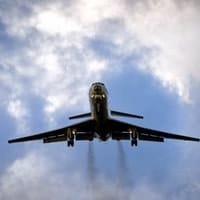(LUXEMBOURG) – More renewable and low-carbon fuels will reduce the carbon footprint of the aviation sector following Monday’s adoption of a new regulation by the Council on a ‘ReFuelEU aviation’ initiative.
“The new law will provide legal certainty to aircraft operators and fuel suppliers in Europe,” said Spanish transport minister Raquel Sanchez Jimenez, for the EU presidency: ” By kick-starting the large-scale production of sustainable aviation fuels, it will soon make the EU’s aviation sector much greener.”
The main objective of the RefuelEU aviation initiative, as a key part of the EU’s Fit for 55 package, is to increase both demand for and supply of sustainable aviation fuels (SAF), which have lower CO2 emissions than fossil fuel kerosene, while ensuring a level playing field across the EU air transport market.
The new legislation aims to put air transport on the trajectory of the EU’s climate targets for 2030 and 2050, as SAF are one of the key short- and medium-term tools for decarbonising aviation. It should address the current situation which is hindering their development: low supply and prices much higher than prices of fossil fuels.
The new regulation contains the following main provisions:
- The obligation for aviation fuel suppliers to ensure that all fuel made available to aircraft operators at EU airports contains a minimum share of SAF from 2025and, from 2030, a minimum share of synthetic fuels, with both shares increasing progressively until 2050. Fuel suppliers will have to incorporate 2% SAF in 2025, 6% in 2030 and 70% in 2050. From 2030, 1,2% of fuels must also be synthetic fuels, rising to 35% in 2050.
- The obligation for aircraft operators to ensure that the yearly quantity of aviation fuel uplifted at a given EU airport is at least 90% of the yearly aviation fuel required, to avoid tankering practices which would bring additional emissions from extra weight..
- The scope of eligible sustainable aviation fuels and synthetic aviation fuels includes certified biofuels, renewable fuels of non-biological origin (including renewable hydrogen) and recycled carbon aviation fuels complying with the Renewable Energy Directive (RED) sustainability and emissions saving criteria, up to a maximum of 70% with the exception of biofuels from food and feed crops, as well as low-carbon aviation fuels (including low-carbon hydrogen), which can be used to reach the minimum shares in the respective part of the regulation..
- Rules on the competent authorities, to be designated by the member states to enforce this regulation, and rules on fines.
- The creation of a Union labelling scheme about environmental performance for aircraft operators using SAF, which will help consumers make informed choices and will promote greener flights.
- Data collection and reporting obligationsfor fuel suppliers and aircraft operators enabling to monitor the effects of this regulation on the competitiveness of EU operators and platforms.
Following this formal adoption, the new regulation will be published in the EU’s official journal in the coming weeks and will enter into force the twentieth day after this publication. It will apply from 1 January 2024. However, articles 4, 5, 6, 8 and 10 will apply from 1 January 2025.
Regulation on ensuring a level playing field for sustainable air transport (RefuelEU aviation)
Fit for 55 (background information)
Timeline / European Green Deal and Fit for 55
Sustainable transport, infrastructure and fuels - guide


